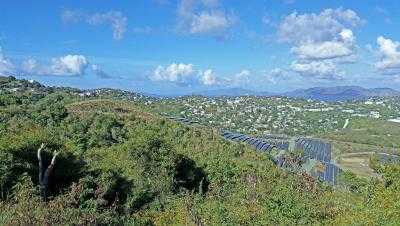Southern Texas towns add solar, but incentives drying up
 Cities and towns in Cameron County, on the southernmost tip of Texas, have been going solar lately, taking advantage of federal and state incentive programs to purchase photovoltaic arrays to reduce their overall electric costs over time. Despite the new installations, a lack of other incentives could stymie future installations.
Cities and towns in Cameron County, on the southernmost tip of Texas, have been going solar lately, taking advantage of federal and state incentive programs to purchase photovoltaic arrays to reduce their overall electric costs over time. Despite the new installations, a lack of other incentives could stymie future installations.
Most recently, a small town called Santa Rosa completed a 14-module array at the city’s community center. The installation at Santa Rosa was made possible by a $22,000 federal stimulus grant dispersed by the Texas State Energy Conservation Office, said Gianluca Ferrario of SPI Go Green. His company installed the Santa Rosa system and will now install systems in Rio Hondo and in Los Indios
Ferrario said the Santa Rosa project is his next municipal project. The company will install the array, thanks to a $23,000 stimulus grant, at its new community center when construction on the center is complete.
“I’m waiting for them to finish construction; then I’ll do the solar installation,” he said.
Soon, other cities in Cameron County, like Los Indios, will install solar. That community will also install solar at its new $330,000 community center, according to The Brownsville Herald.
Looking forward, Farrario said he wasn’t sure if he’d participate in future municipal installations.
“It’s a lot of work honestly, and the money I got back in the end was not too much,” he said. “They pay on reimbursement and you have to wait a long time to get the money back.”
Farrario, who primarily does residential and commercial renewable energy and energy efficiency work, said he’s also concerned about the local renewable market.
“Last year was very difficult,” he said. He explained that last year the local utility, AEP Texas Central Co. quickly ran out of its rebate funds. Without the rebates, he said, the cost of solar was too high to entice residents and others to install solar.
This year, he’s worried about the same lack of incentives.
“They renewed the program, but it already ran out of money,” he said.
Indeed, according to AEP’s site, the $360,000—half dedicated to residential solar, half to non-residential—was more than fully committed by Feb. 4. The utility offered a $2.00-per-watt rebate for residential installations and $ 1.75 per watt for non-residential installations.
“I hope there’s something else coming up,” Farrario said.
Image courtesy of SPI Go Green.



